The telescopes that made possible the discovery of
the stellar dynamical clock
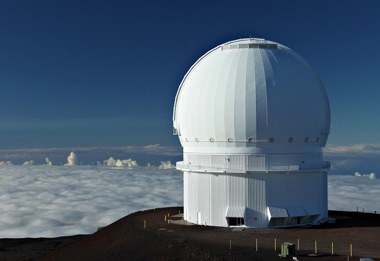
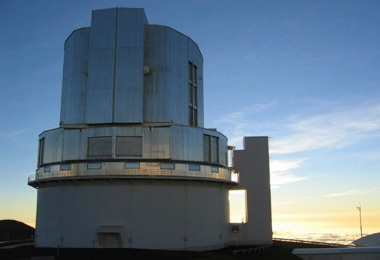
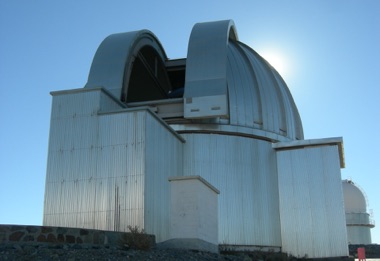
MPG/ESO 2.2m
The MPG/ESO 2.2m telescope is located at La Silla, a mountain 2400m high in the desert of Atacama, about 600km north of Santiago, Chile. It has a mirror of 2.2m diameter built by Zeiss and it is in operation since early 1984 under the responsibility of the European Southern Observatory (ESO). Among its different instruments, the one used for this discovery is the wide field imager WFI, with a very large field of view (34'x33' on the sky) and a spatial resolution of 0.2" per pixel. These observations allowed to image the external regions of 12 globular clusters of the sample.
CFHT
The Canada-France-Hawaii Telescope is located at an altitude of 4200m, atop the summit of the dormant volcano Mauna Kea, on the island of Hawaii. It is 3.6 meter telescope in operation since 1976. In 2003 it has been equipped with MegaCam, a wide-field imager consisting of a mosaic of 36 CCDs covering a total field-of-view of 1x1 square degree on the sky, with a spatial resolution of 0.2 arcseconds per pixel. It has been used to study the outskirts of 8 globular clusters and the entire Blue Straggler Star spatial distribution in the low-density cluster Palomar 14.
SUBARU
The Subaru Telescope is one of the largest telescope, with a mirror of 8.2m diameter. Operated by the Astronomical Observatory of Japan, its name means "Pleiades" in Japanese. It is located on top of volcano Mauna Kea in the island of Hawaii and it is in operation since 2000. The Subaru Prime Focus Camera (Suprime-Cam) is a mosaic of 10 CCDs and covers a 34'x27' on the sky, with a resolution of 0.2 arcseconds per pixel. Images acquired with this telescope have been used to sample the external regions of cluster NGC 2419.
FOUR TELESCOPES ON THE GROUND TO EXPLORE THE CLUSTER OUTSKIRTS
Four powerful ground-based telescopes have been used to explore the Blue Straggler populations in the external regions of each cluster. All these telescopes are equipped with a large field imager able to sample, in one single shot, most of the cluster radial extension.
LBT
The Large Binocular Telescope is located on top of Mt. Graham in Arizona, USA. The telescope has two twin mirrors, each of 8.4m in diameter. The total collecting area of the telescope corresponds to a single circular mirror with a diameter of 11.8m. The telescope saw "first light" in 2005 with one mirror, and it is operating in binocular mode since 2008. The Large Binocular Cameras (LBC) sample 23'x23' on sky at a resolution of 0.23" per pixel. They have been used to study the outskirts of cluster M53.
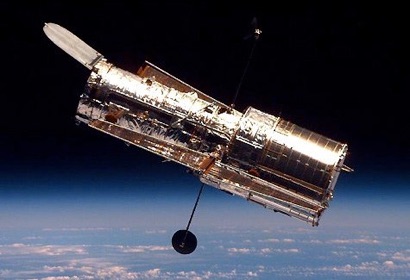
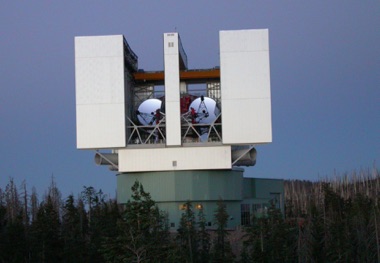
HUBBLE: A TELESCOPE INTO THE SPACE TO PROBE THE CLUSTER CORES
Hubble is a space telescope with a mirror of 2.4m diameter. It was carried into space by the Space Shuttle on 24th April 1990, and it is still orbiting there, at a distance of about 575 km form Earth. It is named after the american astronomer Edwin Hubble, who discovered the expansion of the Universe. Hubble's coverage of light of different colours (its "spectral range") extends from the ultraviolet (which is inaccessible from Earth because of the shielding effect of our atmosphere), through the visible (to which our eyes are sensitive), to the near-infrared. Observations in the ultraviolet were particularly useful for the discovery of the stellar dynamical clock, since this is the best spectral range where to study hot, blue stars as Blue Stragglers. Even more critical for the success of this study have been the high-resolution capabilities of Hubble, due to the instruments onboard and to the fact that it doesn't suffer from the blurring effects of the Earth atmosphere. The instruments used for this study are the Wide Field Planetary Camera 2 (WFPC2) and the Advanced Camera for Surveys (ACS), with pixel scales as small as 0.05 arcseconds. Such a high spatial resolution is mandatory to resolve stars in the innermost regions of most globular clusters, where the stellar crowding is impressively high.

